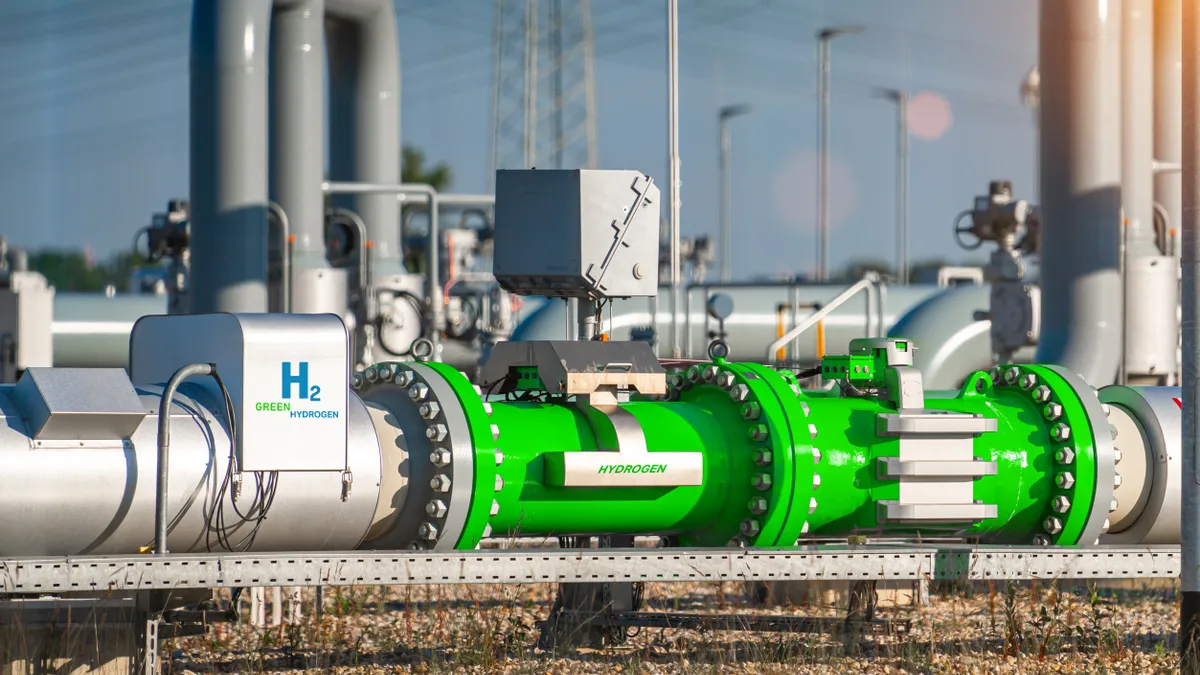Dive Brief:
-
About 12% of U.S. energy and utility companies have made investments in low-carbon hydrogen production, according to a survey by the Capgemini Research Institute.
-
The figure suggests U.S. companies are somewhat behind their global counterparts, 26% of which say they have invested in low-carbon hydrogen. However, U.S. companies plan to catch up, with 63% saying they intend to launch low-carbon hydrogen initiatives by 2030. Globally, 64% of businesses say they plan to invest in low-carbon hydrogen by 2030.
-
However, most low-carbon hydrogen projects announced to date focus on the production of ammonia, which may reflect growing interest among businesses in exporting hydrogen to Europe, said Mark Viehman, principal for hydrogen and clean fuels at Capgemini Americas.
Dive Insight:
Supply-side interest in low-carbon hydrogen fuels appears to be growing in the wake of the bipartisan infrastructure law and the Inflation Reduction Act, according to the recent survey results. But the hydrogen these emerging ventures produce may not be used in the U.S., because many of the announced projects appear focused on exporting their product.
The bipartisan infrastructure law, which set aside $8 billion in funding to create hydrogen “hubs” and collaborative partnerships within those geographic locations, was an instrumental first step in spurring conversations around hydrogen in the U.S., Viehman said. The creation of production tax credits for low-carbon hydrogen by the IRA further accelerated interest in the fuel, leading to the announcement of several large partnerships dedicated to the production of low-carbon hydrogen in the U.S. and especially in the Gulf Coast region, he said.
But most of these partnerships — Viehman declined to discuss specific companies involved — are focused on the production of ammonia, which is made by combining hydrogen with nitrogen.
“There is already an existing market [for ammonia], and it does travel,” Viehman said, referencing the relative difficulty of moving hydrogen without dedicated pipelines. “There are 10 million tons of hydrogen produced in the U.S. right now that is principally going to refining, petrochemicals and the fertilizer industry. So you have a place where there has been a market for quite some time.”
The Inflation Reduction Act will bring the cost of low-carbon hydrogen production in line with carbon-intensive options that are the norm in these industries today, Viehman said. According to Capgemini’s survey, these same industries — petroleum refining, fertilizers and chemicals — are among the sectors that have expressed the greatest interest in buying low-carbon hydrogen in order reduce their own emissions.
Policy developments overseas have also caused demand for hydrogen to soar, Viehman said. Energy independence is a key priority in the European Union following the onset of conflict in Ukraine. The EU has set a target of producing 10 million tons of domestic hydrogen and also aims to import another 10 million tons of hydrogen or ammonia to meet its energy needs.
Collaboration is critical to companies looking to capitalize on that demand, Viehman said, because few existing companies have the in-house expertise needed to produce hydrogen at scale. This has made previously unlikely partnerships — a fertilizer company and a natural gas company might be one example — a norm among newly announced hydrogen projects. But outside California and the Pacific Northwest, electric utilities have been less eager to participate in these collaborations, Viehman said.
The disparity in interest between utilities and other companies could be related to the need to meet stiff renewable energy standards to satisfy European expectations necessary for potential hydrogen exports — a tall order for utilities in most regions of the U.S., Viehman said. And it’s not clear whether the use of hydrogen would prove economical for utilities, which would have to convert energy to hydrogen by way of electrolysis, and then back to energy via combustion, making them unlikely offtakers.
But with potentially lucrative opportunities overseas and in selling to chemical manufacturers, a handful of large utilities with significant renewable energy portfolios have expressed curiosity about hydrogen as a possible new source of revenue, Viehman said.













